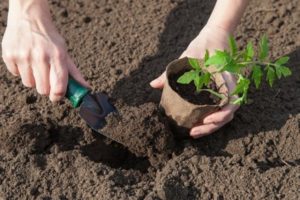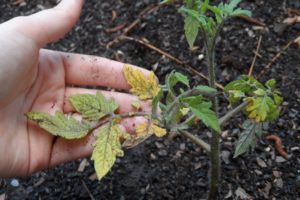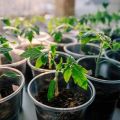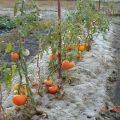How to properly grow and care for tomatoes in the open field in the Moscow region
Growing tomatoes in the open field in the Moscow region is carried out in beds or ridges. In this case, the earth warms up better. It also ensures efficient air exchange. Conditions are created for the vital activity of anaerobic microorganisms, which have a positive effect on harvesting. Tomato bushes planted in beds should have access to sunlight throughout the daylight hours of the Moscow region.
Digging the soil for planting tomato seedlings is carried out by about 30 cm.In the autumn, organic matter is introduced. Presowing soil treatment in spring includes leveling the top layer and loosening it. The most optimal soil for growing tomatoes is considered to be a light soil with a high content of nutrients.
Using crop rotation
The best survival rate of tomato seedlings in the Moscow region, and subsequently the optimal harvesting efficiency, can be obtained if the tomato beds are planned after:
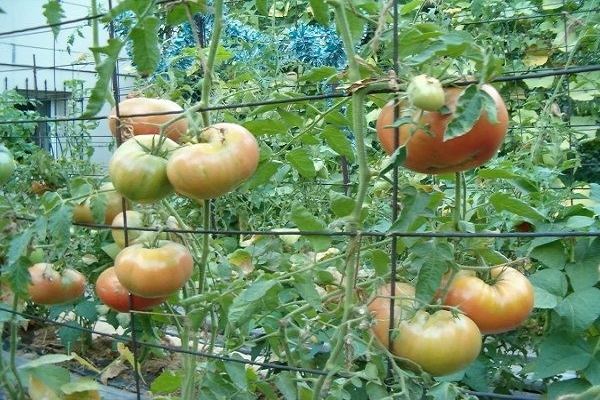
- legumes;
- cucumbers;
- cabbage.
It is not recommended to plant for 3-4 years in areas where vegetables of the Solanaceae family grew (physalis, eggplant, potatoes, and also tomato). Failure to comply with this recommendation can lead to specific diseases in tomatoes and the appearance of insect pests.
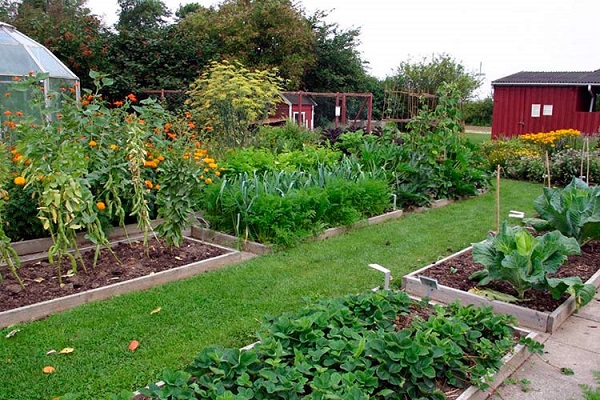
The time of planting seedlings in the beds
It is dangerous to plant tomato seedlings if the soil in the beds has not warmed up to 14-16 degrees. In the Moscow region, such a ground temperature can be expected in early May. Seedlings in containers are thoroughly watered with water at room temperature a day before planting in the soil to ensure safe removal of plants. If the seedlings were planted in separate peat pots, then abundant watering is not necessary.
If during planting seedlings damage to the delicate roots of tomatoes occurs, then before placing them in the soil, the root system is soaked in a special chatterbox. Its composition consists of a mixture of mullein water and clay. Lowland peat can be used instead of clay. You can prepare such a tool even without using a container, but by mixing all the ingredients in a small hole dug in the soil. If you have to transport the seedlings to the planting site, then such a chatterbox will protect the plants from drying out.

Note! It is advisable to pick up a cloudy day for planting tomatoes, otherwise the sun's rays can lead to wilting of the planted plants. If this procedure is carried out in sunny times, then the tomato seedlings should be covered with a special awning until evening.
Seedlings are planted in rows. If plants with high stems are planted, then 60-70 cm should be left in a row between the plants.Small bushes are planted at a distance of about 60-70 cm, and low-growing varieties - 30-35 cm.
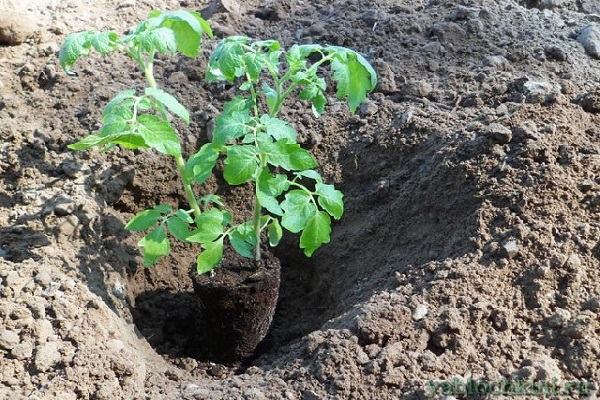
The hole for planting seedlings should have a depth of about 10-12 cm. A handful of rotted manure or compost is placed in it. Then the soil is moistened with cold water (about 1 liter per well). The plant is lowered into the hole so that the lower leaves are near the soil surface. Peat pots are buried in the ground by about 2-3 cm.
This allows the root system to grow over virtually the entire length of the stem when it is in the ground. This process is especially relevant if you have to plant weakened or dry seedlings.
When planting plants that are too elongated, they are deepened a little more into the soil. However, in this case, the fact of heating the soil to such a depth should be taken into account. If the ground is not warmed up, and besides, it has a too heavy structure, then an inclined planting of seedlings is carried out. It is usually planted at a 45 degree angle towards the north side. The stem placed in the hole is sprinkled with soil, and the part that remains above the surface is tied to the support. On such a stem, new roots gradually grow, which can give the plant additional nutrition.
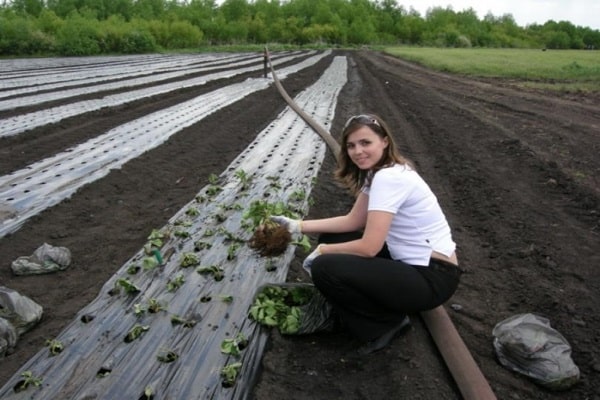
In sunny weather, the planted seedlings must be watered daily, until they are completely rooted. This process in the Moscow region takes about 7 days. With the threat of the return of frost, the planted tomato beds are covered with a film or other non-woven material. For this purpose, you can use sheets of newspaper or straw. On such days, the soil is watered in the beds, and then the process of smoke is provided, until sunrise. This helps to protect the planted seedlings from death.

Caring for the planted tomatoes
Caring for tomatoes, weeding them, begins only after the plants are completely rooted. The destruction of the integrity of the soil crust should be done after each watering of the soil or after rainfall. Such care on hot days is identical to mulching, as it prevents intensive evaporation of moisture from the soil. In rainy climates, this process will reduce the likelihood of fungal diseases in plants.
Carrying out the first feeding of tomato seedlings begin 0.5 months after planting it in the ground. The next fertilization is done after the beginning of flowering bushes. The third time, the soil is fertilized at the time of mass filling of fruits.
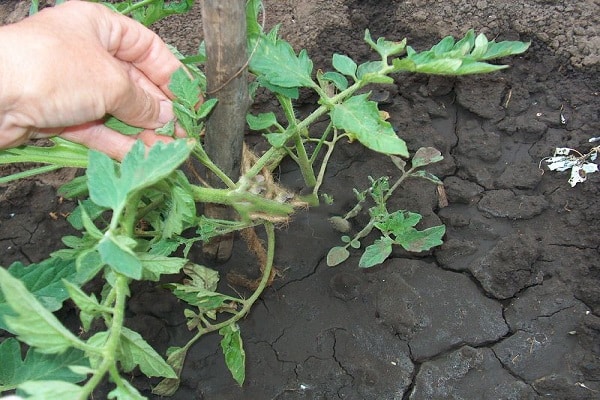
Tomatoes are fertilized with bird droppings dissolved in water at the rate of 100 g per 10 liters of water. After three days of infusion, plants are watered with this liquid by adding 1 liter under each bush.
Keep in mind! It is recommended that after feeding the tomatoes, regular watering is carried out so that the root system does not burn.
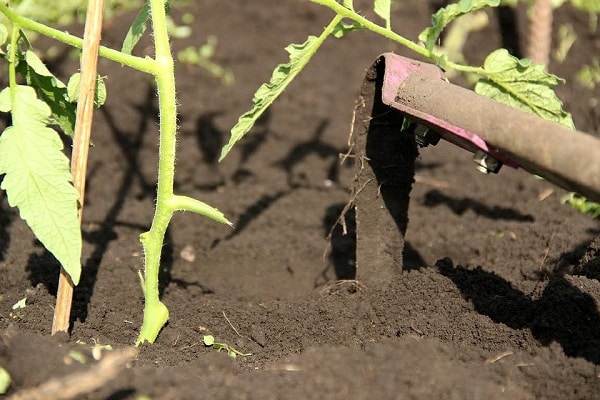
It is recommended to treat the plants with Bordeaux liquid twice a season. The first spraying is carried out 20 days after planting the seedlings in the ground, and the next, at the beginning of the ripening period of tomatoes. To prevent late blight, spraying with diluted water serum (1x3) is carried out.
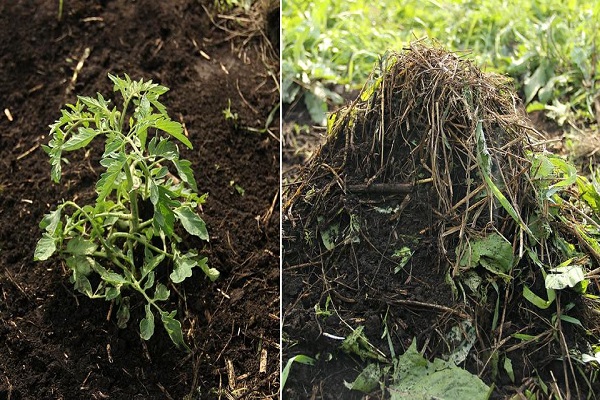
How to pinch and how to tie up tomato stems
Tearing off lateral shoots (stepchildren) is carried out in order to maximize the growth of the main stems of the plant, as well as the ripening of tomatoes. In addition, pinching of the top of the stem is carried out. In the Moscow region, tomatoes can be successfully grown when one main stem is formed in the bushes. This removes all side shoots.
Grasshopping is carried out by breaking off the shoots growing in the leaf axils on the main stem. This process should be controlled by the grower.It is necessary to carefully monitor the tomatoes, since their breaking off is optimal when the stepsons reach 3-5 cm. But you should not remove the shoot completely, as this causes problems for the development of the plant. The stump from the stepson is left about 1 cm in size.
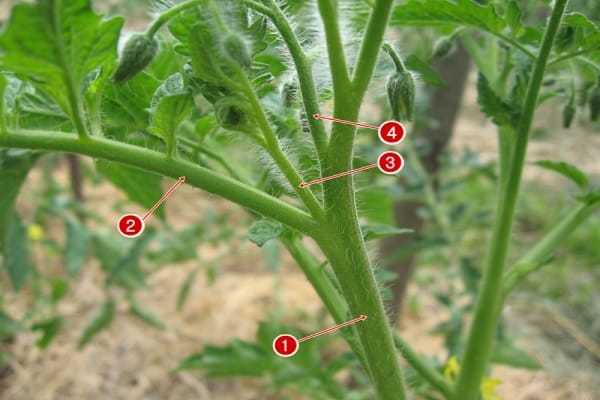
After the third inflorescence, pinching of the top of the stem (palpation) is carried out. This is done so that the bush directs its forces to ripen the remaining fruits. 2-3 leaves are left over the last brush with ovaries.
In the Moscow region, when growing tall varieties of tomatoes in the open field, the stem is necessarily tied to a support. It is dug in next to the hole (on its north side) at the time of planting seedlings. The distance to the hole is left about 12-15 cm. The stem is tied with twine, in the figure of eight, a little higher than each flower brush.

Organization of irrigation regime
Watering tomatoes should be done regularly. To determine the need for watering, a hole is pulled out next to the plant, to a depth of about 20-25 cm. If the soil at its bottom is wet, then you can wait with watering.
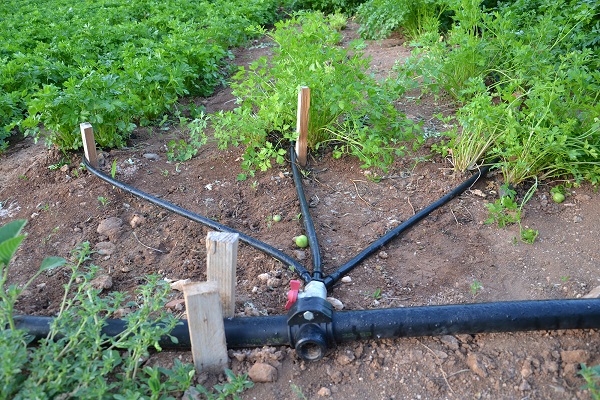
Tomatoes are watered only at the root. You can not spray their leaves, as this can be fraught with burns and late blight, especially if such a procedure is carried out at lunchtime. The best method is drip irrigation.
Irregular watering can cause the tomatoes to crack. This phenomenon is especially noted in hot weather. The intensity of watering during the ripening period should be slightly reduced. Because excess moisture prevents the fruits from ripening, and top rot may also appear.
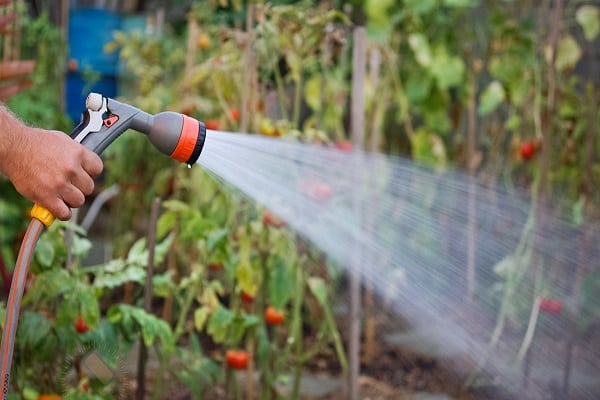
Harvesting tomatoes in the suburbs
Tomato varieties with early ripening, grown in open areas, are harvested as early as July. In this variety of tomatoes, the period before fruit ripening lasts only 45 days after seed germination. To speed up this period, tomatoes are cut off in an immature form (brown). You should also pick off fruits with obvious defects or with manifestations of the disease.
When grown in the suburbs of tomato varieties with an average ripening or late ripening, they can be affected by late blight due to the fact that cold dew appears in the morning hours. To protect plants from this, you can cover them with foil at night. If the cold season comes, and the tomatoes are not yet ripe, then they should still be cut off. You can put them to ripen, or canned green. There are many recipes for such salting.
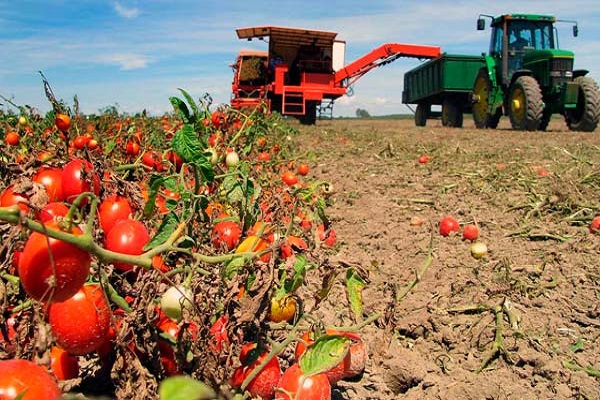
Storing tomatoes
Unripe fruits may turn red if stored in a warm room. Usually they are laid out in one layer on the windowsill. A method is also used in which the fruits are immersed in water with a temperature of 65 degrees for 2-3 minutes, and then cooled in a basin with cool water. After drying them, the vegetables are placed in special fruit boxes. Unripe tomatoes are laid out, alternating with ripe tomatoes. This method helps to speed up the ripening process due to the fact that ripe fruits emit ethylene gas, which accelerates the ripening of other tomatoes.
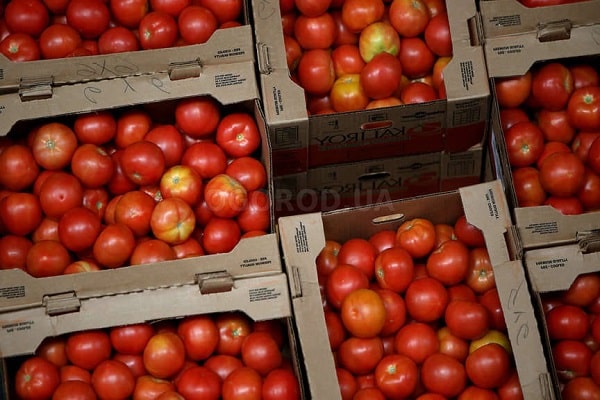
The boxes are installed in a room with sufficient lighting. Otherwise, the tomatoes will have a weak color, and the ripening period will stretch for a longer time. If it is necessary to lengthen the period of their ripening, then the temperature in the room is lowered down to 10 degrees. Fully ripe tomatoes can be stored for up to 1.5 months, provided that the storage temperature is maintained within 5 to 10 degrees.

